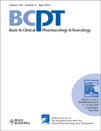Cardiac and Haemodynamic Effects of Tacrolimus in the Halothane-Anaesthetized Dog
Abstract
Abstract: Tacrolimus (FK506) is a potent immunosuppressant widely used for the treatment of patients with solid organ transplantation and autoimmune diseases. The present study investigated the cardiac, haemodynamic and electrophysiological effects of tacrolimus. Tacrolimus in doses of 0.01 and 0.1 mg/kg was infused over 10 min. with a pause of 20 min. in halothane-anaesthetized dogs under monitoring of plasma drug concentrations (n = 5). Sub-therapeutic dose of 0.01 mg/kg hardly affected any of the cardiovascular variables except that it slightly delayed the repolarization. The clinically relevant dose of 0.1 mg/kg had negative chronotropic, inotropic and dromotropic effects, and lowered blood pressure by 70 ± 12 mmHg, effects previously ascribed to Ca2+ channel blocking action. Tacrolimus also delayed the repolarization process in a dose-dependent and reverse use-dependent manner with an increase in electrical vulnerability. The cardiovascular effects of tacrolimus were enhanced after the cessation of drug infusion, despite a decline in the plasma concentrations. In human embryonic kidney 293 cells, however, only supratherapeutic tacrolimus concentrations (>0.1 μmol/l) inhibited hERG K+ current with a maximum inhibition of 28% at 10 μmol/l, indicating that other mechanisms might have also operated besides direct block of ionic channel function. The present study suggests that tacrolimus has negative chronotropic, inotropic and dromotropic effects in the heart, delays repolarization and lowers blood pressure. Moreover, the monitoring of the actual drug concentration may not necessarily reflect its effects on the cardiovascular system; thus, frequent monitoring of cardiovascular variables may be essential for tacrolimus-treated patients.




